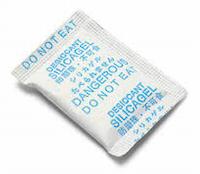Silicon is the second most abundant element, accounting for 27.7 percent of the Earth’s crust by mass (oxygen is the first). It does not occur in nature uncombined, but rather as an oxide (silica) and as silicates. Sand, quartz, rock crystal, amethyst, agate, flint, and opal are among the minerals found in the oxide. Asbestos, granite, hornblende, feldspar, clay, and mica are all silicates. Silicon has the atomic symbol Si, atomic number 14, and atomic weight [28.084; 28.086]. The nucleus of a silicon atom contains 14 protons and 14 neutrons. Therefore, the silicon mass number is 28.
![Silicon has the atomic symbol Si, atomic number 14, and atomic weight [28.084; 28.086]. The nucleus of a silicon atom contains 14 protons and 14 neutrons. Therefore, the silicon mass number is 28.](https://whatsinsight.org/wp-content/uploads/2022/02/silicon-mass-number.jpg)
The majority of silicon is used to create alloys such as aluminum-silicon and ferro-silicon (iron-silicon), which are used to make dynamo and transformer plates, engine blocks, cylinder heads, and machine tools, as well as to deoxidize steel. Silicon is also used in the production of silicones. Silicons are silicon-oxygen polymers with attached methyl groups. Silicone oil is a lubricant found in cosmetics and hair conditioners. Silicone rubber is a waterproof sealant that is used in bathrooms, as well as around windows, pipes, and roofs.
In the computer and microelectronics industries, silicon is widely used as a semiconductor in solid-state devices. Hyperpure silicon is required for this. To control its electrical properties, silicon is selectively doped with trace amounts of boron, gallium, phosphorus, or arsenic.
Concrete and cement are made from sand (silicon dioxide or silica) and clay (aluminum silicate). Sand is also the main component of glass, which has thousands of applications. Silicon, in the form of silicate, is found in pottery, enamels, and high-temperature ceramics.
Table of Contents
Silicon Element Information
| Element | Silicon |
| Atomic number | 14 |
| Atomic weight | 28.086 |
| Boiling point | 3,265 °C (5,909 °F) |
| Melting point | 1,410 °C (2,570 °F) |
| Density | 2.33 grams/cm3 |
| Electronic configuration | 1s22s22p63s23p2 |
| Oxidation state | −4, (+2), +4 |
Related Links
SiO2 Lewis Structure| Step By Step Construction
SiCl4 polar or nonpolar
Sublimation Examples| Process & Case Study
Recommended Video
Summary
- Silicon (Si) has the atomic symbol Si, atomic number 14, and atomic weight [28.084; 28.086].
- Si atom contains 14 protons and 14 neutrons. Therefore, the silicon mass number is 28.
- Silicon is used in the manufacturing of semiconductors, preparation of silicon rubber, and production of glass
Frequently Asked Questions
1. What are aerosols?
Aerosols are extremely minute solid particles or droplets of liquid floating in the atmosphere. These solid particles can enter the atmosphere largely as a result of major dust storms, volcanic eruptions, or soot particles from huge fires.
2. How does silicon work in solar panels?
A solar cell is composed of two layers of silicon that have been processed to allow electricity to flow through them when exposed to sunlight. The first layer is positively charged, whereas the second is negatively charged. As photons reach the layers, they give up their energy in the form of electrons to the silicon atoms. Check out the full article “Solar panels and solar energy”.
3. What is a PV diagram?
In physics, a PV diagram is a diagram that depicts the thermodynamic phases of a process. PV diagrams distinguish between isobaric, isochoric, isothermal, and adiabatic processes.
4. What is the role of silicon in solar panels?
Silicon is frequently utilized as a semiconductor in solar panels since it is a low-cost material with high energy efficiency. Aside from that, it possesses excellent corrosion resistance, long-term durability, ideal thermal expansion characteristics, superior photoconductivity, and low toxicity. Check another interesting and related article, ” solar thermal power plants”.
5. Is silicon metal or nonmetal?
Silicon is neither metal nor non-metal; it’s a metalloid, an element that falls somewhere between the two.
6. Does Silicon produce greenhouse gases?
Since the production of silicon metal, silicones, and silanes needs a significant amount of energy, greenhouse gas emissions are recognized as one of the most important sustainability metrics.
Check another related article, “What is the carbon footprint”.
7. What is silicon’s mass number?
Silicon has the atomic symbol Si, atomic number 14, and atomic weight [28.084; 28.086].
Check out the full article “Silicon valence electrons”.
8. Where is thermal diffusivity used?
Thermal diffusivity is a critical concept in the heat transmission process. Thermal diffusivity is the rate at which temperature spreads across a substance. It is a method of measuring heat transfer in a material. It measures the heat transfer from heat to cold material.
More Links
Is HCl Polar or Nonpolar?
NH3 Lewis Structure & Molecular Geometry
The Density of Water lbs/U.S gal
Is Chlorine a metal?
Silicon Carbide – An Overview
Disclaimer
Whatsinsight.org‘s blog and everything published on it are provided solely as an information resource. The blog, its authors, and affiliates accept no responsibility for any accident, injury, or damage caused by following the information on this website, in part or in whole. We do not recommend using any chemical without first consulting the manufacturer’s Material Safety Data Sheet and following the safety advice and precautions on the product label.
- BCl3 Lewis Structure in four simple steps - November 1, 2023
- PH3 Lewis Structure in four simple steps - October 8, 2023
- PF3 Lewis structure in four simple steps - September 24, 2023



